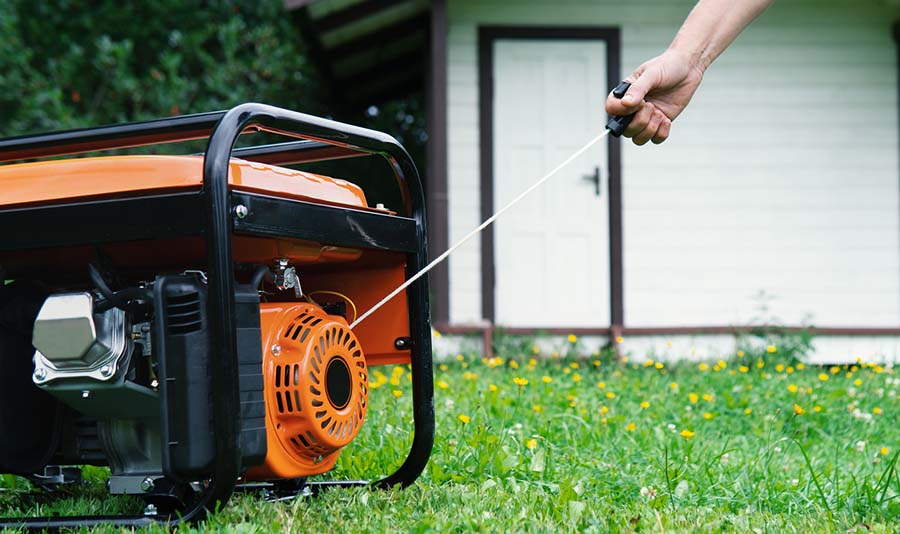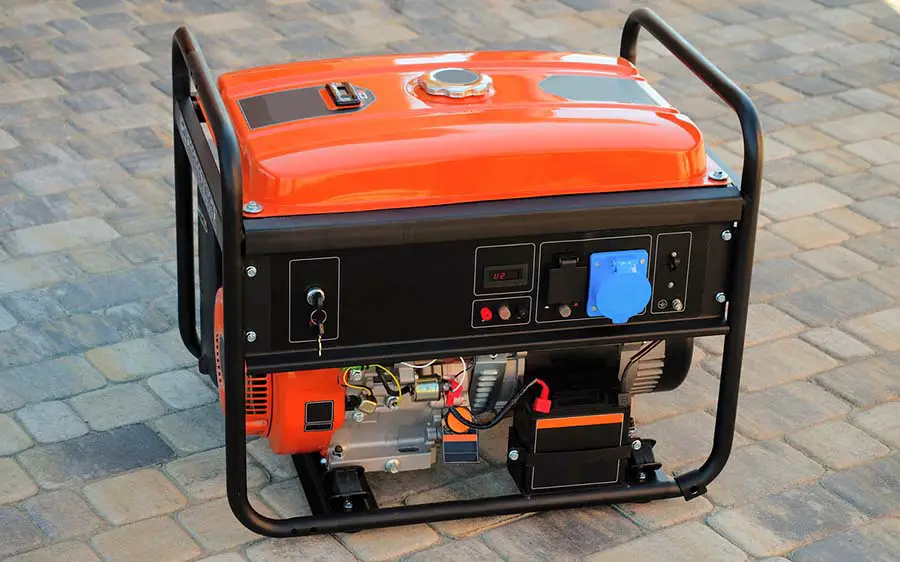
If you are in a thunderstorm and a massive lighting strike just left your area powerless, or if the government cannot provide enough electricity, you will want to consider having a generator nearby. But what if, in this situation of emergency, you accidentally break the pull cord in your desperate attempt to get the power back on? Are you doomed? Or is there another way to turn the lights back on without this cord?
When the pull cord breaks on your generator, you can start it without the pull cord by using a drill. All you need is a power drill and the correct-sized socket to fit into the nut attachment of the generator. Simply attach the drill to the nut attachment and turn it on to power up the generator.
When turning on a generator manually, you can use a power drill if you wish. But there are also other methods to start your generator that do not require a power drill. Most of these methods include using the rope that you (by accident, of course) broke. If these methods won’t work, what are the reasons your generator still might not start? We explore all of this.
How To Start a Generator Without a Pull Cord?
When faced with a situation where you can no longer use your pull cord to start your generator, you should first consult the manual that came with the generator. This manual will tell you how the pull cord on your generator model works, and sometimes the manual itself might advise you on what to do when your pull rope breaks.
Many modern generators come with redundancy systems built into the generator that can solve this issue. Some generators have electric starting systems that can be useful, but they are only helpful if you possess another source of electricity.
Other manuals explain what to do if you wish to have the starting motor manually cranked to get it running. There are methods you can use to fix your cord, or if you are lucky, your generator has an ’emergency recoil system.’ These other methods will not be discussed here, but only how to start the generator without any form of rope.
If you are not in a situation where you can use a substitute pull cord, you can power your generator with only a power drill (or a cordless impact driver), a right-sized socket, and some energy left in the battery. Once you have these items, you will follow these steps:
- Pull the shroud (cover) off of the generator’s starter motor to see what kind of nut attachment is in the center of the (pull) starting mechanism.
- Find out what the size of the nut is and what type of socket you will have to use to connect to it. Most manufacturers have different sized nut attachments; hence you will want to have as many sockets near you as possible to test.
- Once you have discovered the size of the socket, you can connect a ‘breaker bar connector’ to the power drill (or impact driver) you brought. Set the drill to a low speed, followed by placing the socket at the end of the breaker bar connector.
- Turn on the drill and let it rotate the nut at a high velocity.
- It might take several tries and rotations, and you might have to tweak a bit with the priming system (or even your generator’s choke), but your generator should eventually start.
There, you just manually started your generator without using a cord!
Can You Use a Broken Pull Cord To Start a Generator?
If you do not have a power drill and your cord broke, hope is still left for you. Not all, but some generators do allow you to start your generator even if you are using a broken rope.
For this to work, you will have to take the shell off of the starting mechanism. You will now see the nut attached in the middle of the mechanism and a flywheel that surrounds this nut that can turn. If this flywheel has a tiny notch to it (meaning a small hook), you are in luck!
Take the remaining piece of rope you have left, or even use a longer cord if you have any at hand, and tie an appropriately-sized knot. Hook the knot on the notch and run the rope around the wheel as far as possible. Now, you’ll see if you pull very hard on this rope, the wheel will spin fast and power the generator. If you pull hard enough, your generator will start.
If you do not have a notch in the flywheel around which the rope must go, there is no way for the rope to stick to the flywheel and turn it once pulled. Thus, this method will not work without the notch.
I should mention that this method of starting your motor, as opposed to the normal way, is preferred by some. Some maintain the usage of a drill can be potentially dangerous.
Can You Fix a Broken Pull Cord On a Generator?

If you have read your generator’s manual and you decide against starting it manually, or if it is not possible to start it by other means, you can attempt to fix the pull cord. Sometimes the rope itself breaks close and tightly against the generator, in which case you might think the tiny bit of rope that remained is lost inside the generator’s housing.
Sometimes you can be lucky, and when you open the generator’s housing, you might still find a tiny bit of pull rope left. In this scenario, you have to try and tie a very strong knot to tie the two broken ends of the rope together. Whichever knot you decide to make, make sure it is almost unbreakable.
Guide the new rope to run through the generator precisely as the old rope did, tie the new cord to a handle and use it now to start the generator!
This is certainly not a permanent fix but only used in cases where you desperately require power – it will get the job done for you since it will get your generator running.
Unfortunately, if there is no rope remaining inside the generator, you will usually not be able to fix the pull cord on your generator as described above.
Reasons Why Your Generator Fails To Start
If you have tried making another roper, used the same cord attached directly to the flywheel, and used a drill to try to start your generator and it still doesn’t work, it might be because of any of the following reasons:
- The generator does not have enough oil. To check the oil levels of your generator, you must look at the crankcase. Note that uneven surfaces can cause your oil sensor to give you false readings.
- It has no gas left. This is the most obvious one, and you should check your gas tank to see if your generator has enough gasoline.
- Your spark plug is faulty. If you have used your generator for a long time, your sparkplug can be full of buildup.
- The battery of your generator is dead. If you have an electric start generator, the battery might not have sufficient charge left to start the engine.
- The carburetor of your generator may be clogged. This can sometimes happen if fuel was left in the generator and the generator was not used in some time. This may cause some of the substance to clog your carburetor, and it is suggested that you merely try cleaning your carburetor. If this cleaning does not work, you may have to consider replacing it.
Conclusion
Thankfully, if you ever end up breaking your generator’s pull cord while trying to get it started, you still have a chance to turn the lights back on before supper. There are a couple of methods you can use; the one requiring the least manual labor will just need a power drill. You will use this power drill to manually do what you tried to do with a pull rope.
If you do not have a power drill, you still have a chance of having the power back on before you need to start cooking food tonight by using the old rope to spin the flywheel. You can even fix the old rope if you want to until you get a more permanent fix.
